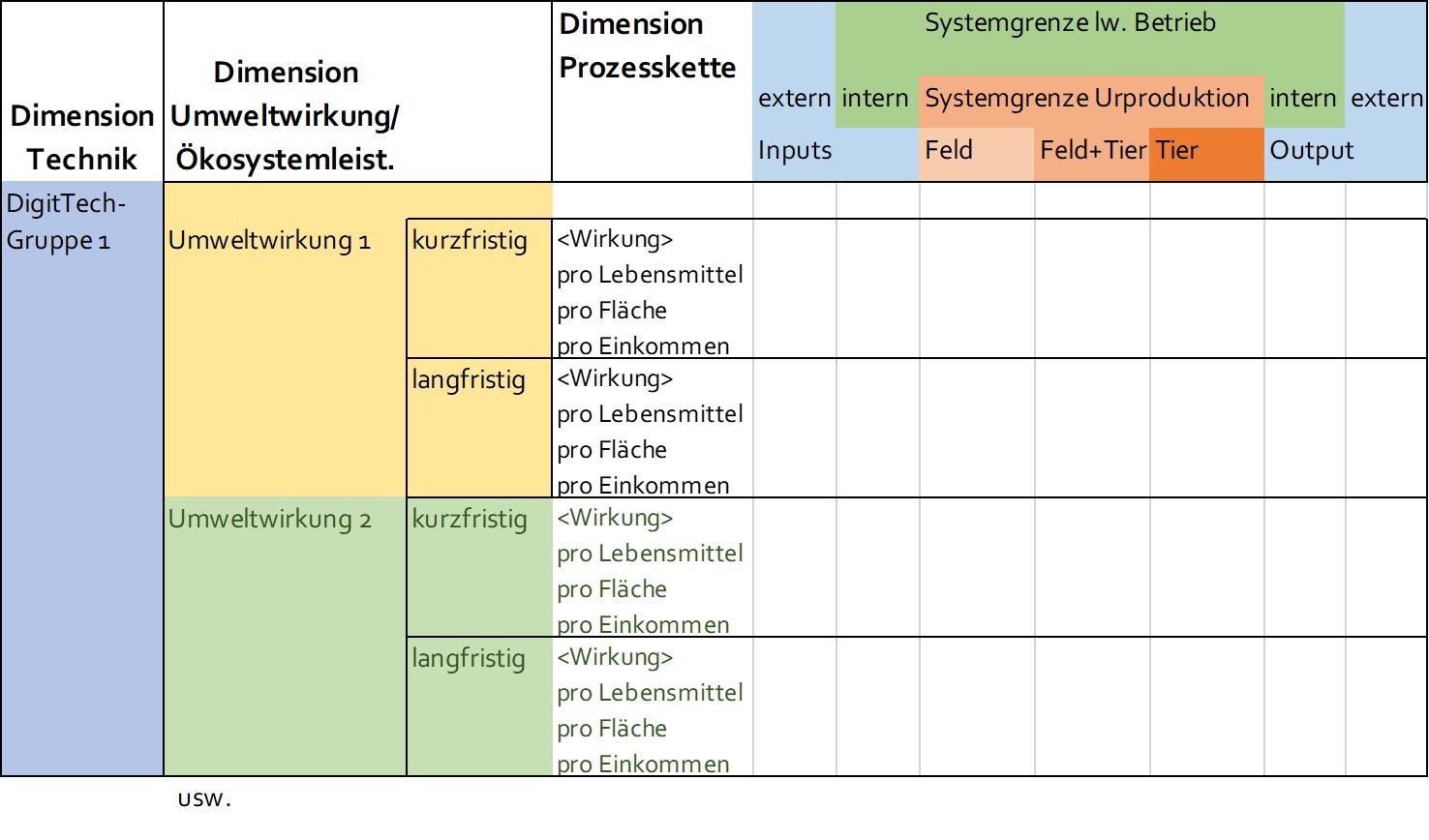Project goal
Previous research on this topic has focused primarily on practical experiences, opportunities and challenges presented by new technologies. An ecological assessment of specific technologies was only occasionally considered. Now different digitalization technologies for foreign and Innenwirtschaft should be included, which will be examined with regard to similar mechanisms of action in the ecological dimension. The aim of this project is to design a practical concept for assessing the environmental impacts of digital technologies and to develop criteria. The ecological assessment of digital technologies should enable possible improvements to the techniques with regard to environmental goals.
Procedure
The purpose and scope of the study were determined using a generic system image of an agricultural business. Criteria from the GAP environmental indicators, the FAO's SAFA guidelines for sustainability assessment, life cycle assessment at farm level with SALCA and FarmLife as well as indicators used in environmental impact assessments were included. The company should be mapped including upstream and downstream activities and all processes in internal and external trade.
The combination of methods used for this included:
- The transfer of results from case studies in the area of precision farming and precision livestock farming to model farms for exploratory LCA evaluations using the farm management tool FarmLife
- A systematic exchange of expertise in research and consulting (Austria, Germany and Switzerland)
- A telephone pilot survey of 10 companies on use cases in Innenwirtschaft to determine farmers' subjective assessment of the environmental impact
- The discussion of possible environmental impacts with the involvement of experts from technology, research and practice.
Results so far
A comparison of the individual indicator systems showed that central impact categories can be seen in the following areas: resources, emissions, ecosystems, resilience including animal welfare and environmentally relevant structural indicators of agricultural production. In any case, the relationship between technology use and yield strategy as well as the aim of the analysis (efficiency analysis or total freight) are considered crucial for the evaluation. These criteria as well as the results of the pilot company survey and the expert workshops were incorporated into the environmental assessment matrix shown in the picture. What is central here is the technology impact group (and its mechanism or direction of action), on the basis of which the environmental impacts should be assessed.

Preliminary conclusion
Further development work in the project includes the application for different technology groups and the expansion to include a monitoring concept using soil as an example. Ultimately, the most practical basis should be created for assessing the environmental impacts of digital technologies in agriculture.










